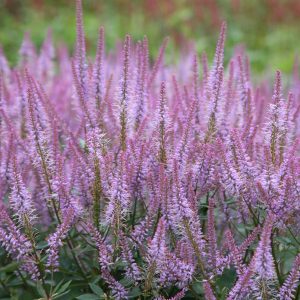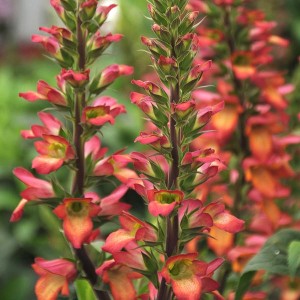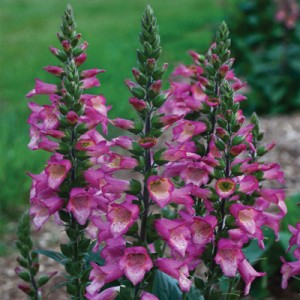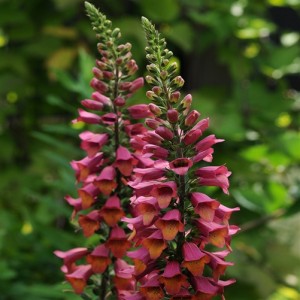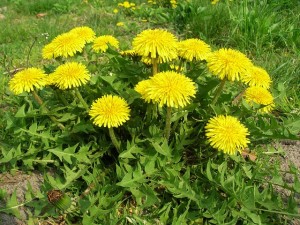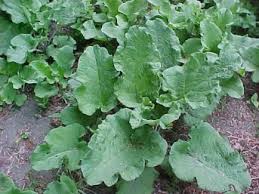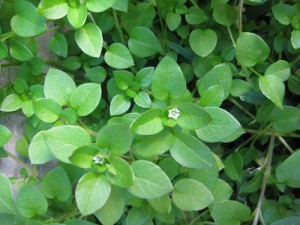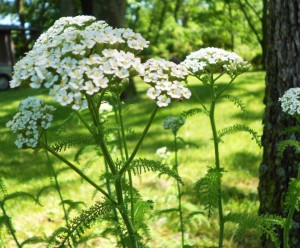Having been in business for 25 years on Nantucket, we have seen many trends in the islands’ landscape community come and go. When I started at the nursery 14 years ago, there was a huge demand for ‘Knock Out’ series roses, for example – but today we only sell a modest number of shrub roses of any type. When I was actively landscaping, many projects called for broad swaths of hydro-seeded, exotic, love grass but now (thankfully) landscape architects are using a wide variety of native grasses for those applications. In fact, incorporation of native grasses, shrubs and perennial plants in the landscape is a massive trend that we don’t see slowing down. Unfortunately, we’ve also seen an incredible increase in deer pressure across the island, which has spurred the movement toward planting only the most deer-resistant plants available.
We’ve seen that many of the native plants recommended for our climate are no longer deer-resistant at all. For shrubs, we still recommend Myrica pensylvanica (Bayberry) and Baccharis halimifolia (Groundsel) as the backbone of a native planting plan. Native grasses like Panicum virgatum (Switch Grass), Schizachyrium scoparium (Little Bluestem), Sporobolus heterolepsis (Prairie Dropseed) and Deschampsia sps. (Hair Grass) are a good choice as well. Recently, I’ve been impressed with the various species of Pycnanthemum (Mountainmint) for good deer and rabbit resistance.
There are several species of Pycnanthemum in the trade that can be planted in a variety of conditions. All are native to North America, and attract a wide variety of pollinators. They look great mixed with other native plants and grasses in meadow gardens but are also a great addition to butterfly gardens and traditional perennial borders. These herbaceous perennials are members of the mint family, with fragrant foliage and varying degrees of hairy leaves and stems. They are generally 3-4′ tall and flower in shades of white and pale lavender in high summer to early fall. Mountainmint grows in spreading clumps that are enlarged by runners; when they are happy, they can spread quickly, but the edges of the clumps can be easily managed by spading and pulling up the runners once or twice a year.
Some of the most commonly available species are listed below:
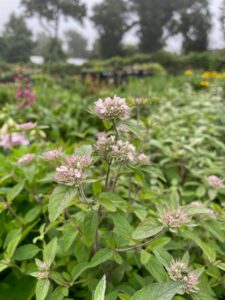 Pycnanthemum curvipes (Stone Mountainmint): 2-3′ tall. Ovate silvery/green leaves with purple-spotted white flowers. Native to rocky outcrops, bluffs, dry hillsides, open rocky woodlands and fields of the South Eastern United States.
Pycnanthemum curvipes (Stone Mountainmint): 2-3′ tall. Ovate silvery/green leaves with purple-spotted white flowers. Native to rocky outcrops, bluffs, dry hillsides, open rocky woodlands and fields of the South Eastern United States.
Pycnanthemum flexuosum (Appalacian Mountainmint): 2-3′ tall. Ovate green, hairless leaves with white/pale laender flowers. Native to South Eastern United States where it occurs in a variety of conditions.
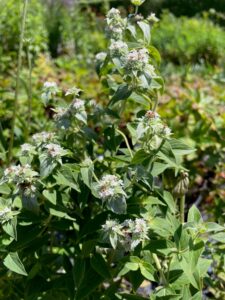 Pycnanthemum muticum: 2-4′ tall. Ovate silver/green fuzzy leaves with pale lilac flowers and showy bracts. Native to moist woods and meadows of the North Eastern United States.
Pycnanthemum muticum: 2-4′ tall. Ovate silver/green fuzzy leaves with pale lilac flowers and showy bracts. Native to moist woods and meadows of the North Eastern United States.
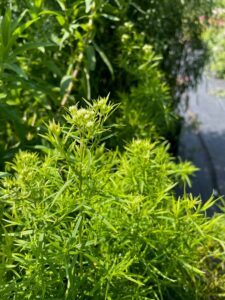 Pycnanthemum tenuifolium (Narrowleaf Mountainmint): 3′ tall. Narrow green, hairless leaves with clusters of tiny white flowers. Native to a wide variety of conditions in the North Eastern United States.
Pycnanthemum tenuifolium (Narrowleaf Mountainmint): 3′ tall. Narrow green, hairless leaves with clusters of tiny white flowers. Native to a wide variety of conditions in the North Eastern United States.
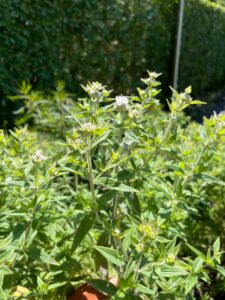 Pycnanthemum verticillatum var. pilosum aka P. pilosum (Whorled Mountainmint): 1-3′ tall. Grey/green leaves with clusters of white flowers. Native to forests and meadows of a wide swath of the Eastern and Central United States.
Pycnanthemum verticillatum var. pilosum aka P. pilosum (Whorled Mountainmint): 1-3′ tall. Grey/green leaves with clusters of white flowers. Native to forests and meadows of a wide swath of the Eastern and Central United States.
Pycnanthemum virginianum (Virginia Mountainmint): 2-3′ tall. Narrow lance-shaped leaves with white flowers dotted in lavender. Native to moist woodlands and wetlands of Eastern United States.

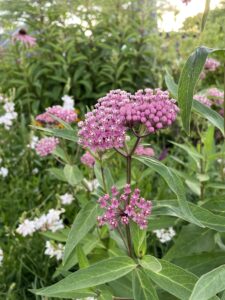
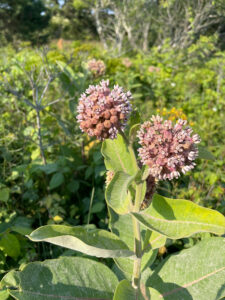
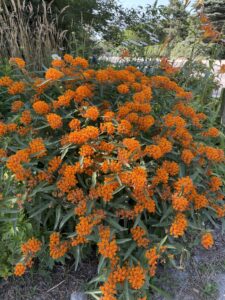
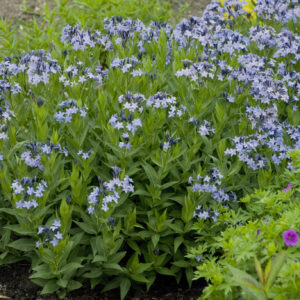

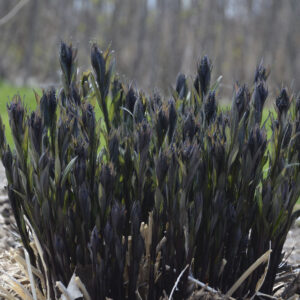
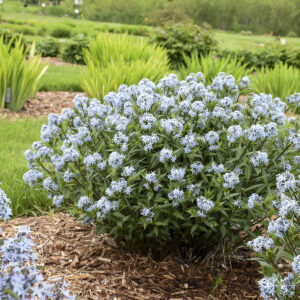
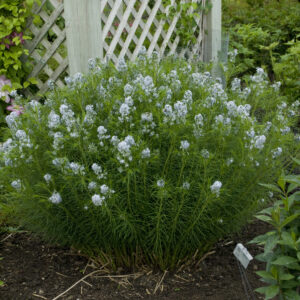
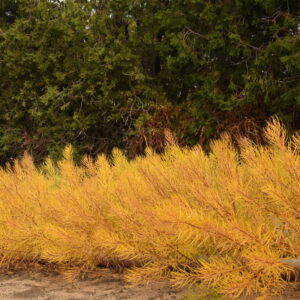
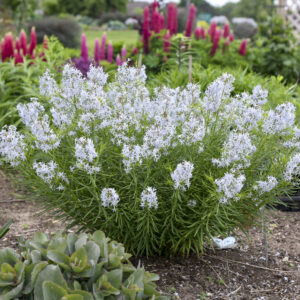
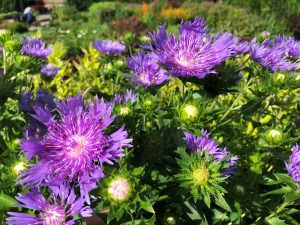
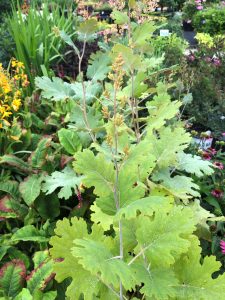 At Surfing Hydrangea, we sell a wide variety of “bread and butter” plant material that landscapers are looking for every day, like cherry trees, catmint and fountain grasses. Keeping lots of stock of those items is great for business, but it’s always the plants that I’ve never heard of, or seen in person that get me jazzed up for gardening again when I’m a little burned out. My favorites are often the new introductions and hard-to-find perennial treasures that Britt brings in for the courtyard.
At Surfing Hydrangea, we sell a wide variety of “bread and butter” plant material that landscapers are looking for every day, like cherry trees, catmint and fountain grasses. Keeping lots of stock of those items is great for business, but it’s always the plants that I’ve never heard of, or seen in person that get me jazzed up for gardening again when I’m a little burned out. My favorites are often the new introductions and hard-to-find perennial treasures that Britt brings in for the courtyard.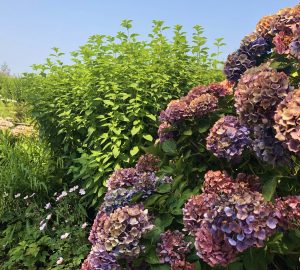 I planted a big group of ‘Blue Butterfiles’ in the back of our garden last year, and have been very impressed with how sturdy their stems are and the plants overall size. Year two, they are easily 6′ tall, filling an area between two large Hydrangeas very effectively. I did notice considerable self-seeding this spring, but the volunteers were easily uprooted when they germinated and weren’t any trouble. The flowers are profuse and very pretty when they arrive in September, but certainly best enjoyed close up.
I planted a big group of ‘Blue Butterfiles’ in the back of our garden last year, and have been very impressed with how sturdy their stems are and the plants overall size. Year two, they are easily 6′ tall, filling an area between two large Hydrangeas very effectively. I did notice considerable self-seeding this spring, but the volunteers were easily uprooted when they germinated and weren’t any trouble. The flowers are profuse and very pretty when they arrive in September, but certainly best enjoyed close up.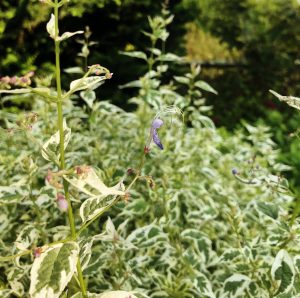 ‘Snow Fairy‘ in a different spot so that I could compare them. This plant has been a real star. So much so, that I am planning to plant another group further down this year. The best part of this selection is the splash of white in the foliage. When other plants are beginning to look tired with the heat of August, this Caryopteris is coming into its own. The mid-green leaves have a varying degree of variegation, giving the plant a bright fresh look. ‘Snow Fairy’ is shorter in stature than ‘Blue Butterflies’, making it more versatile. Ours are just beginning to flower at 4′ tall.
‘Snow Fairy‘ in a different spot so that I could compare them. This plant has been a real star. So much so, that I am planning to plant another group further down this year. The best part of this selection is the splash of white in the foliage. When other plants are beginning to look tired with the heat of August, this Caryopteris is coming into its own. The mid-green leaves have a varying degree of variegation, giving the plant a bright fresh look. ‘Snow Fairy’ is shorter in stature than ‘Blue Butterflies’, making it more versatile. Ours are just beginning to flower at 4′ tall.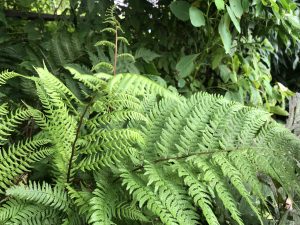 LADY FERN, Athyrium felix-femina cvs: This useful medium-sized fern (2-3′) grows best in fertile, moist soil with good drainage in light to dense shade. It’s lacy fronds are a pleasant light green arising from a round clump. It will tolerate full sun, with ample moisture, and is one of the few ferns that will thrive in the dry soils under large shade trees. If grown in ideal conditions, lady fern will slowly form a colony that completely covers the ground. Try ‘Lady in Red’ for a contrasting red stem.
LADY FERN, Athyrium felix-femina cvs: This useful medium-sized fern (2-3′) grows best in fertile, moist soil with good drainage in light to dense shade. It’s lacy fronds are a pleasant light green arising from a round clump. It will tolerate full sun, with ample moisture, and is one of the few ferns that will thrive in the dry soils under large shade trees. If grown in ideal conditions, lady fern will slowly form a colony that completely covers the ground. Try ‘Lady in Red’ for a contrasting red stem.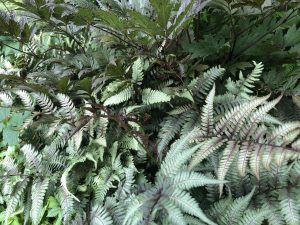 JAPANESE PAINTED FERN, Athyrium nipponicum cvs: This small to medium-sized (18-24″), colorful fern is best grown in fertile, evenly moist soil in light to dense shade. The most striking feature of these ferns are their purple and silver coloring which contrasts well with other shade plants. These are best kept in dappled to full shade as they will scorch in the sun. The most readily available cultivars are ‘Pictum’, ‘Branford Beauty’ and ‘Ghost’ but ‘Burgundy Lace’ is also a stunning plant to try.
JAPANESE PAINTED FERN, Athyrium nipponicum cvs: This small to medium-sized (18-24″), colorful fern is best grown in fertile, evenly moist soil in light to dense shade. The most striking feature of these ferns are their purple and silver coloring which contrasts well with other shade plants. These are best kept in dappled to full shade as they will scorch in the sun. The most readily available cultivars are ‘Pictum’, ‘Branford Beauty’ and ‘Ghost’ but ‘Burgundy Lace’ is also a stunning plant to try. AUTUMN FERN, Dryopteris erythrosora: This is my favorite fern. They grow 1-3′ tall, preferring rich, evenly moist soil and dappled light to full shade. The young fronds emerge a coppery bronze and change to a glossy deep green as they mature. New fronds continue to emerge throughout the growing season, so there is always some contrast between the young and mature fronds. When they are happy, Autumn Ferns will spread to form a dense colony. BONUS: these ferns are evergreen, and continue to look fresh long past frost. Tidy them up in spring before new growth emerges to keep them looking their best. ‘Brilliance’ is even showier than the species with brighter copper coloring
AUTUMN FERN, Dryopteris erythrosora: This is my favorite fern. They grow 1-3′ tall, preferring rich, evenly moist soil and dappled light to full shade. The young fronds emerge a coppery bronze and change to a glossy deep green as they mature. New fronds continue to emerge throughout the growing season, so there is always some contrast between the young and mature fronds. When they are happy, Autumn Ferns will spread to form a dense colony. BONUS: these ferns are evergreen, and continue to look fresh long past frost. Tidy them up in spring before new growth emerges to keep them looking their best. ‘Brilliance’ is even showier than the species with brighter copper coloring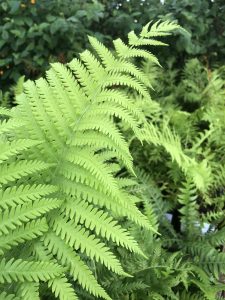 OSTRICH FERN, Matteuccia struthiopteris cvs: Ostrich fern is a stately addition to shady gardens with minimal exposure. These ferns have tall (3+’), medium/light green, erect, delicate fronds that are particularly suited to deep shade and moist fertile soils. As they mature, the black root stock begins to rise above the soil level. Never attempt to shorten the root stock, this procedure generally kills the plant. Working with these ferns over the years, I’ve found them to burn out in August unless grown in deep shade, with constant moisture. The fronds are also prone to easily breaking, so they are best used in the back of the shady garden, where they are less likely to get damaged. Try ‘The King’ in areas where burning out is a concern; this cultivar seems to do better than the species in dappled light.
OSTRICH FERN, Matteuccia struthiopteris cvs: Ostrich fern is a stately addition to shady gardens with minimal exposure. These ferns have tall (3+’), medium/light green, erect, delicate fronds that are particularly suited to deep shade and moist fertile soils. As they mature, the black root stock begins to rise above the soil level. Never attempt to shorten the root stock, this procedure generally kills the plant. Working with these ferns over the years, I’ve found them to burn out in August unless grown in deep shade, with constant moisture. The fronds are also prone to easily breaking, so they are best used in the back of the shady garden, where they are less likely to get damaged. Try ‘The King’ in areas where burning out is a concern; this cultivar seems to do better than the species in dappled light.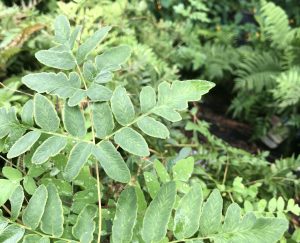 ROYAL FERN, Osmunda regalis: These ferns are a New England native, performing well in moist, fertile soils in dappled to deep shade. Depending on conditions, they will grow between 2 and 5′ tall with a loose spreading habit. Royal ferns have a unique look among ferns; the fronds have leaflets that are much rounder than others, resembling plants in the pea family. Their fertile fronds rise above the foliage, contrasting with the medium green leaves. Like ostrich ferns, these ferns will form a root stalk as they age that should not be disturbed with pruning of any kind.
ROYAL FERN, Osmunda regalis: These ferns are a New England native, performing well in moist, fertile soils in dappled to deep shade. Depending on conditions, they will grow between 2 and 5′ tall with a loose spreading habit. Royal ferns have a unique look among ferns; the fronds have leaflets that are much rounder than others, resembling plants in the pea family. Their fertile fronds rise above the foliage, contrasting with the medium green leaves. Like ostrich ferns, these ferns will form a root stalk as they age that should not be disturbed with pruning of any kind.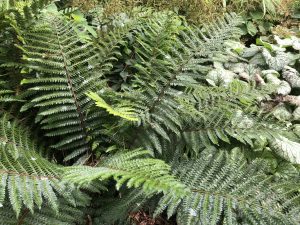 JAPANESE TASSEL FERN, Polystichum polyblepharum: I’ve always admired this evergreen fern for it’s glossy green leaves and rounded habit. In our garden it forms adjoining clumps that are 2′ tall and about 3′ wide. We leave the foliage until spring to clean up, trimming it off before new fronds emerge.
JAPANESE TASSEL FERN, Polystichum polyblepharum: I’ve always admired this evergreen fern for it’s glossy green leaves and rounded habit. In our garden it forms adjoining clumps that are 2′ tall and about 3′ wide. We leave the foliage until spring to clean up, trimming it off before new fronds emerge.